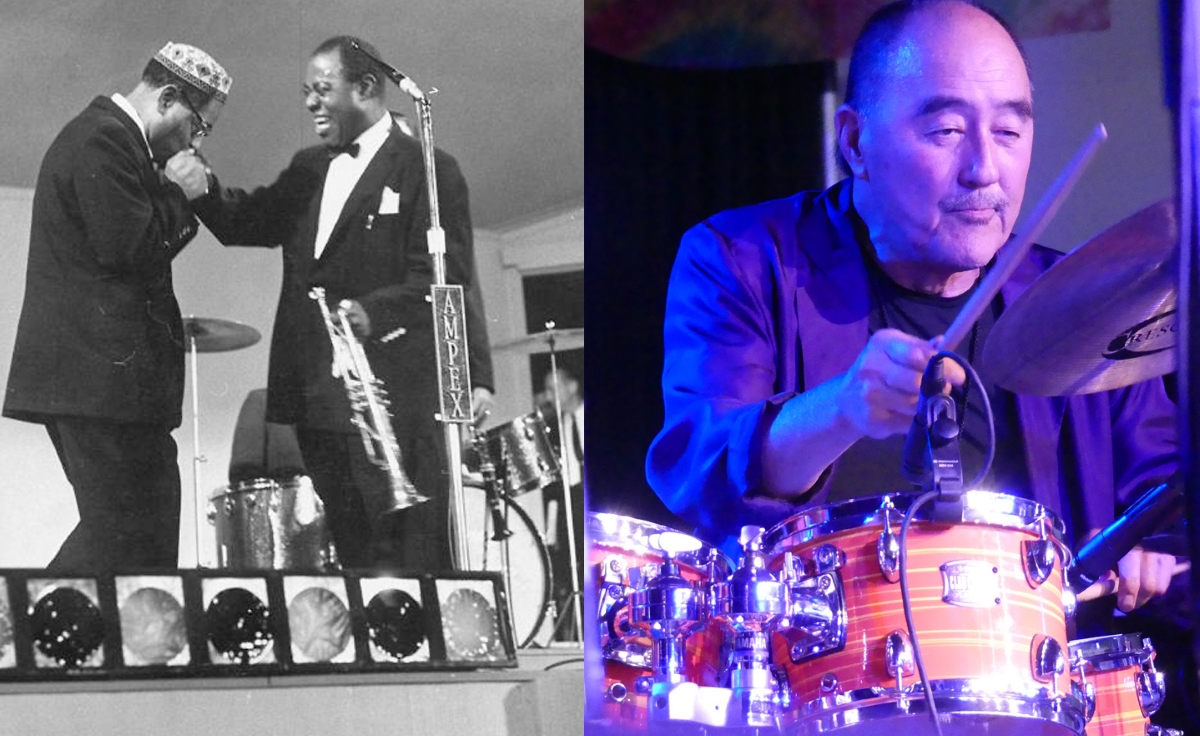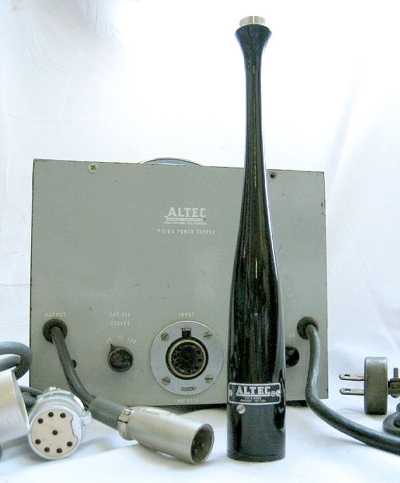
Running In Stereo
The sound reinforcement for the first show was designed to provide a stereo experience to the audience “because of the present wide interest in stereo,” according to Tinkham. Extending out from the left and right front corners in front of the stage, two Altec Lansing Voice of the Theatre H210 enclosures were stacked horizontally, each with four 15-inch horn-loaded drivers, according to the equipment list.
These enclosures were topped by an Altec 1004 multicellular horn, fed by four model 288 large-format high-frequency drivers. (The crossover point was 400 Hz.) The horns were positioned two to three feet higher than the lip of the stage, throwing toward the more distant seating areas.

Centered on top of the stage ceiling at about 30 feet above ground level, a Fidelity Sound 5512 enclosure with four Altec 515 15-inch horn-loaded cone drivers provided LF for a center channel, joined by an Altec 1005 cellular horn, fed by two model 288 drivers.
The center loudspeaker only reproduced the output of the center mics, and the left/right mics fed their respective loudspeaker stacks. No electronic mixing was used, so the stereo effect in the audience was controlled only by the positioning of the microphones in relation to the performers.
Sixty years later, Malgieri chooses to present the sound in left/right stereo through Meyer Sound MILO line arrays. He pans some channels to help localize the performers on stage and to enhance the overall musicality, saying that “it’s the only way to get some separation in the mix.” However, he avoids any hard panning so that the audience sitting toward the sides won’t miss parts of the performance.
Microphone Complement

The mics were all “systems,” each powered by a dedicated vacuum-tube supply that weighed 11.5 pounds – this equipment was bulky! The three flown units were Altec 21B omnidirectional condensers with a stated frequency response of 20 Hz to 15 kHz and a sensitivity of -48 dB. They were positioned three feet back from the valance at a height of 10 feet above the front stage riser. The center mic was flanked by the other two, placed 10 feet away on either side.
On the floor were four Altec 21Ds (I was unable to determine the polar pattern of this mic, though one source cited it as a cardioid). One resided at the front lip of the stage for the announcer while the other three were positioned left, center, and right for “general pickup” of the musicians. The cables of these mics were tethered at 10 feet so that they couldn’t be moved enough to compromise stereo imaging.
Prior to performances, the stage crew rearranged the mics to best capture the particular act while maintaining the imaging, in addition to ensuring that soloists and vocalists could approach as needed. The overhead mics were able to be moved a couple of feet forward or backward on suspended strings when necessary to provide better pickup.
The Mix
The left/right mics were assigned to their respective left/right channels, and each set of mics (left, center and right) fed a separate mixer – two Raytheon RPC-40 4-position broadcast mixers for left/right and an Altec 4-position broadcast mixer for center. The Altec mixer contained four preamp modules, a line amplifier, and a power supply unit. Effectively, then, this early festival sound reinforcement design blended the acoustic outputs of three discrete systems.
From the mixers, the signals went to customized equalizers that were specifically designed for the properties of the loudspeakers, which were measured over several days based on the “warble tone acoustic response” before the specific filters were combined. Tinkham notes that the equalization “yielded an essentially flat acoustic response to 12,000 cps (cycles per second) at a distance of 10 feet, and was down 4 dB at 15,000 cps.”
The output was then passed to an Altec 256C tube power amplifier dedicated to each loudspeaker stack, which provided 75 watts to the combined load (for the left and right stacks) of eight cone drivers and four compression drivers. Putting that in context, the small powered studio monitors next to me in my room as I write this are each run with a 75-watt bi-amp power module.
